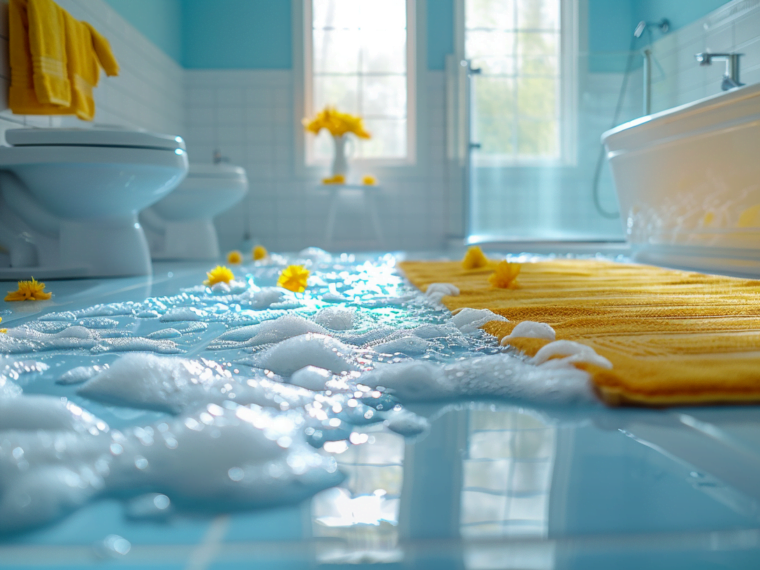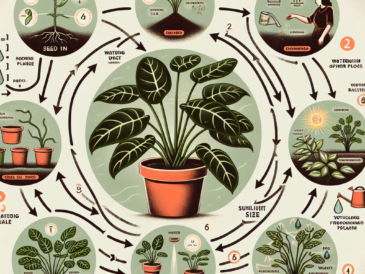Keeping your bathroom clean is essential for maintaining a hygienic and pleasant living environment. A clean bathroom not only looks better but also helps prevent the spread of germs and bacteria, ensuring the health and well-being of you and your family. By regularly cleaning your bathroom, you can create a more inviting space that is comfortable to use and free from unpleasant odors.
Benefits of a Clean Bathroom
A clean bathroom offers numerous benefits beyond just aesthetics. It helps prevent the buildup of mold and mildew, which can be harmful to your health and difficult to remove once established. A clean bathroom also reduces the risk of slips and falls due to wet or slippery surfaces, making it a safer space for everyone in your household. Additionally, a clean bathroom can help prolong the life of your fixtures and fittings, saving you money on repairs and replacements in the long run.
When it comes to cleaning your bathroom, having the right tools and supplies is essential to ensure an effective and thorough job. Here is a list of essential cleaning supplies that you will need:
Essential Cleaning Supplies:
– All-purpose cleaner: A versatile cleaner that can be used on various surfaces such as countertops, sinks, and toilets.
– Disinfectant: To kill germs and bacteria, especially important for high-touch areas like doorknobs and light switches.
– Glass cleaner: For mirrors and windows to achieve a streak-free shine.
– Toilet bowl cleaner: Specifically formulated to tackle tough stains and bacteria in the toilet.
– Scrubbing brushes: Different sizes and shapes for scrubbing grout, tiles, and other hard-to-reach areas.
– Microfiber cloths: Ideal for dusting, wiping down surfaces, and absorbing moisture.
– Rubber gloves: Protect your hands from harsh chemicals and bacteria while cleaning.
Recommended Tools for Effective Cleaning:
– Toilet brush: To scrub and clean the inside of the toilet bowl effectively.
– Squeegee: For quick and streak-free cleaning of shower doors and tiles.
– Grout brush: To tackle mold and mildew in between tiles and grout lines.
– Bucket: For carrying water and cleaning solutions around the bathroom.
– Spray bottle: To easily dispense cleaning solutions onto surfaces.
– Vacuum cleaner: For removing dust and debris from floors and hard-to-reach corners.
– Mop: To clean and sanitize bathroom floors effectively.
Having these essential cleaning supplies and tools on hand will make your bathroom cleaning routine more efficient and ensure that your bathroom stays clean and hygienic.
When it comes to bathroom cleaning, it’s important to follow a systematic approach to ensure all areas are thoroughly cleaned. One of the key areas to focus on is the toilet. Start by applying a toilet bowl cleaner and allowing it to sit for a few minutes before scrubbing with a toilet brush.
Pay special attention to the inside of the bowl and under the rim. Don’t forget to clean the outside of the toilet as well, including the seat and base.
Next, move on to cleaning the sink and countertop. Use a mild cleaner or a mixture of water and vinegar to wipe down the surfaces. Pay attention to any soap scum or toothpaste residue around the sink basin and faucets. Don’t forget to clean the drain stopper and any soap dishes or toothbrush holders.
When it comes to the shower and bathtub, start by spraying the surfaces with a shower cleaner and allowing it to sit for a few minutes. Use a scrub brush or sponge to scrub away any soap scum or grime. Pay special attention to the grout lines and corners where mold and mildew can accumulate. Rinse thoroughly with water to remove any cleaner residue.
For mirrors and glass surfaces, use a glass cleaner and a lint-free cloth to wipe away any streaks or smudges. Be sure to clean both sides of the mirror or glass surface for a thorough clean. Pay attention to any water spots or toothpaste splatters that may be present.
Finally, don’t forget to clean bathroom fixtures and hardware such as faucets, towel bars, and toilet paper holders. Use a mild cleaner and a soft cloth to wipe down these surfaces, paying attention to any buildup or grime. For hard-to-reach areas, use a toothbrush or cotton swab to ensure a thorough clean.
Dealing with Mold and Mildew
Mold and mildew can be stubborn bathroom nuisances, but with the right approach, they can be effectively eliminated. Use a mixture of water and vinegar or a commercial mold remover to scrub away the mold and mildew from surfaces. Make sure to ventilate the bathroom properly to prevent future growth.
Removing Soap Scum and Hard Water Stains
Soap scum and hard water stains can make your bathroom surfaces look dingy. Combat these by using a mixture of baking soda and vinegar to scrub away the buildup. For hard water stains, a mixture of lemon juice and baking soda can work wonders.
Addressing Grout and Tile Cleaning
Grout and tile can accumulate dirt and grime over time, making them look dirty and unappealing. Use a mixture of baking soda and water to scrub grout lines clean, and a mild detergent solution for tile surfaces. Consider using a grout sealer to prevent future staining.
Tips for Freshening up Bathroom Odors
Unpleasant bathroom odors can linger, even after cleaning. Combat this by using natural odor absorbers like baking soda or activated charcoal. Additionally, regularly cleaning the bathroom, using air fresheners, and ensuring proper ventilation can help keep odors at bay.
When it comes to maintaining a clean bathroom, establishing a regular cleaning routine is key. By setting aside specific days or times each week to clean the bathroom, you can prevent dirt and grime from building up. This routine can include tasks such as wiping down surfaces, scrubbing the toilet and shower, and cleaning the floors.
Strategies for preventing future messes
To prevent future messes in the bathroom, there are a few strategies you can implement. Encouraging family members or housemates to clean up after themselves, such as wiping down the sink after use or hanging up wet towels, can help keep the bathroom tidy. Using a shower spray daily can also help prevent soap scum and grime from accumulating.
Organization tips for keeping the bathroom clutter-free
Keeping the bathroom organized is essential for maintaining a clean space. Utilizing storage solutions such as baskets, shelves, and drawer organizers can help keep toiletries and cleaning supplies neat and easily accessible. Regularly decluttering items that are no longer needed or used can also prevent the bathroom from becoming overcrowded and messy.
When it comes to keeping your bathroom clean, opting for eco-friendly cleaning methods can have numerous benefits. Using natural cleaning products not only helps to reduce the use of harsh chemicals in your home but also minimizes the impact on the environment. By choosing to make your own DIY cleaning solutions, you can create a greener bathroom that is safe for both your family and the planet. These homemade cleaners can be made using simple ingredients like vinegar, baking soda, and essential oils, which are not only effective but also cost-effective.
Benefits of Using Natural Cleaning Products
Natural cleaning products are free from harsh chemicals that can be harmful to your health and the environment. They are biodegradable and do not contribute to water pollution, making them a safer choice for your home.
DIY Cleaning Solutions for a Greener Bathroom
Creating your own cleaning solutions using ingredients like vinegar, baking soda, and essential oils can help you maintain a clean and eco-friendly bathroom. These homemade cleaners are effective at removing dirt and grime without the need for harsh chemicals.
Tips for Reducing Water and Energy Usage in the Bathroom
In addition to using eco-friendly cleaning products, you can also reduce your environmental impact by being mindful of your water and energy usage in the bathroom. Simple changes like fixing leaky faucets, installing low-flow showerheads, and turning off lights when not in use can help conserve resources and lower your utility bills.
Frequently Asked Questions (FAQ)
[lightweight-accordion title=”What are some companion planting techniques that can be applied in bathroom cleaning?”]Companion planting techniques involve strategically placing certain plants together to enhance growth and deter pests. In the context of bathroom cleaning, this can translate to using specific cleaning products in combination to maximize effectiveness and efficiency.[/lightweight-accordion][lightweight-accordion title=”How can Cow dung manure be utilized in bathroom cleaning?”]Cow dung manure can serve as a natural fertilizer that is rich in nutrients for plant growth. In the context of bathroom cleaning, it can be used in bio-compost solutions to promote the growth of beneficial organisms that aid in breaking down organic matter and maintaining a healthy environment.[/lightweight-accordion][lightweight-accordion title=”What are the different phases of seed germination and how can this knowledge be applied to cleaning bathrooms effectively?”]The different phases of seed germination include imbibition, emergence of the radicle, and development of the seedling. Understanding these phases can help in implementing a systematic approach to bathroom cleaning, starting from prepping the surfaces (imbibition) to tackling deep-seated dirt and grime (emergence of the radicle) to finally achieving a sparkling clean bathroom (development of the seedling).[/lightweight-accordion][lightweight-accordion title=”How can the intimidation factor of cleaning a bathroom be addressed through the use of plant home decor?”]Integrating plant home decor in the bathroom can create a calming and inviting atmosphere, reducing the intimidation factor often associated with cleaning tasks. The presence of plants can bring a sense of tranquility and natural beauty, making the cleaning process more enjoyable and less daunting.[/lightweight-accordion][lightweight-accordion title=”What are some misconceptions about using fertilizer in bathroom cleaning, and how can these misconceptions be debunked?”]One common misconception is that fertilizers are only meant for plant growth and have no place in bathroom cleaning. However, certain natural fertilizers like bio-compost can be beneficial in breaking down organic matter and promoting a healthy environment. By understanding the different uses of fertilizers, these misconceptions can be debunked.[/lightweight-accordion][lightweight-accordion title=”How can the concept of companion planting be applied to the selection of cleaning products for bathroom maintenance?”]Just as companion planting involves selecting plants that benefit each other when placed together, choosing cleaning products that complement each other can enhance the effectiveness of bathroom maintenance. Pairing disinfectants with bio-compost solutions, for example, can create a synergistic effect in combating germs and promoting cleanliness.[/lightweight-accordion][lightweight-accordion title=”What are some creative ways to incorporate plant growth into bathroom cleaning routines?”]Integrating tabletop plants or small potted plants in the bathroom can not only enhance the aesthetic appeal but also promote a sense of care and attention towards the space. Regularly watering these plants can serve as a reminder to attend to bathroom cleanliness tasks, creating a harmonious environment for both plants and people.[/lightweight-accordion][lightweight-accordion title=”How can the concept of seed differentiation be applied to organizing bathroom cleaning tasks effectively?”]Seed differentiation refers to the process of cells dividing and differentiating into specific types of cells. Similarly, in organizing bathroom cleaning tasks, differentiating between tasks based on priority and complexity can help in tackling them efficiently. By categorizing tasks as ‘parent cells’ (major cleaning tasks) and ‘daughter cells’ (smaller tasks), a systematic approach can be adopted for a thorough cleaning process.[/lightweight-accordion][lightweight-accordion title=”What are some essential plant fertilizers that can be repurposed for bathroom cleaning purposes?”]Certain plant fertilizers like leaf mould or compost can be repurposed for bathroom cleaning as natural alternatives to chemical cleaners. These fertilizers contain beneficial nutrients that can aid in breaking down dirt and grime, promoting a healthier environment without the use of harsh chemicals.[/lightweight-accordion][lightweight-accordion title=”How can the concept of bio-compost be integrated into a bathroom cleaning routine for a greener approach?”]Bio-compost, which consists of organic materials that have decomposed into nutrient-rich soil, can be used in bathroom cleaning as a sustainable alternative to chemical cleaners. By incorporating bio-compost solutions in cleaning processes, the bathroom can be maintained in an eco-friendly manner, reducing the reliance on synthetic products and promoting a healthier environment.[/lightweight-accordion]



